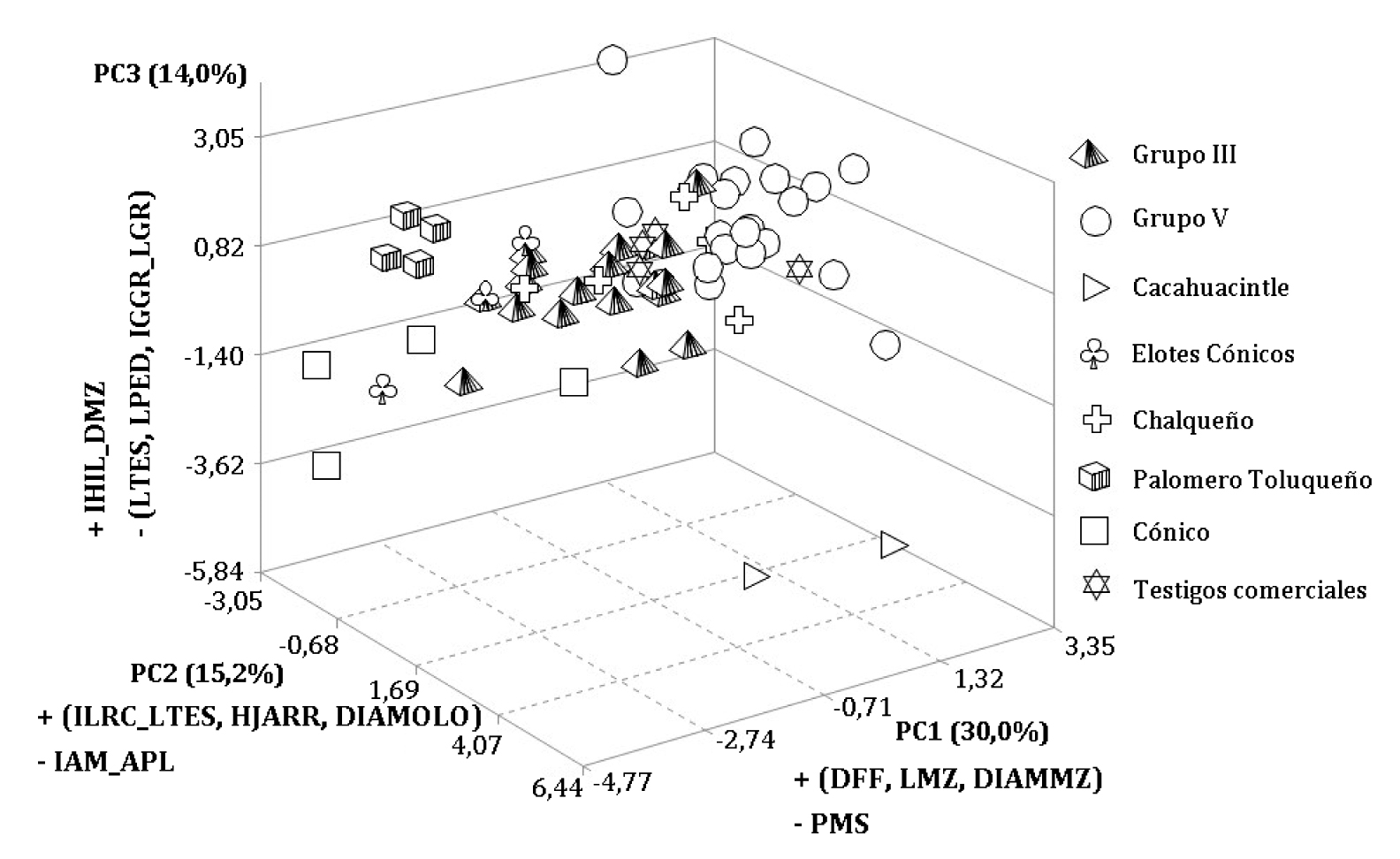Intra-racial variation of maize landraces from the highlands of Puebla, Mexico
Keywords:
intra-racial diversity, native populations, race, morphological variationAbstract
Diversity among native maize populations in the highlands of the state of Puebla, Mexico has been studied through the association of those populations with some of the reported maize races; however, population variation within races has been little studied. The aim of the study was to characterize morphologically populations of native maize from the highlands of the state of Puebla and to define relationships among and within races to which they belong. In 2012, 41 native maize populations from the valleys of Serdan, Libres-Huamantla and Puebla were evaluated; 19 representative-race populations, two commercial and two experimental populations were included as controls in the trials. Forty morphological variables were recorded and an analysis of variance was applied, as ell as multivariate techniques such as discriminant stepwise, principal component and cluster analyses. Statistical differences among populations for most of he variables were detected and it is considered as an indicator of diversity. Native populations were associated with Chalqueño, Conico, and Elotes Conicos aces and with sub-race Elotes Chalqueños. Variation among and within groups was identified, suggesting that the environment and the dynamic process of selection from the farmers on native maize populations in the highlands of the state of Puebla, support an important variation among and within groups representative of the maize races in this area. On the basis of the identified variation, breeding and conservation in situ of maize races can be carried out.

Downloads
Published
Issue
Section
License
Aquellos autores/as que tengan publicaciones con esta revista, aceptan las Políticas Editoriales.


